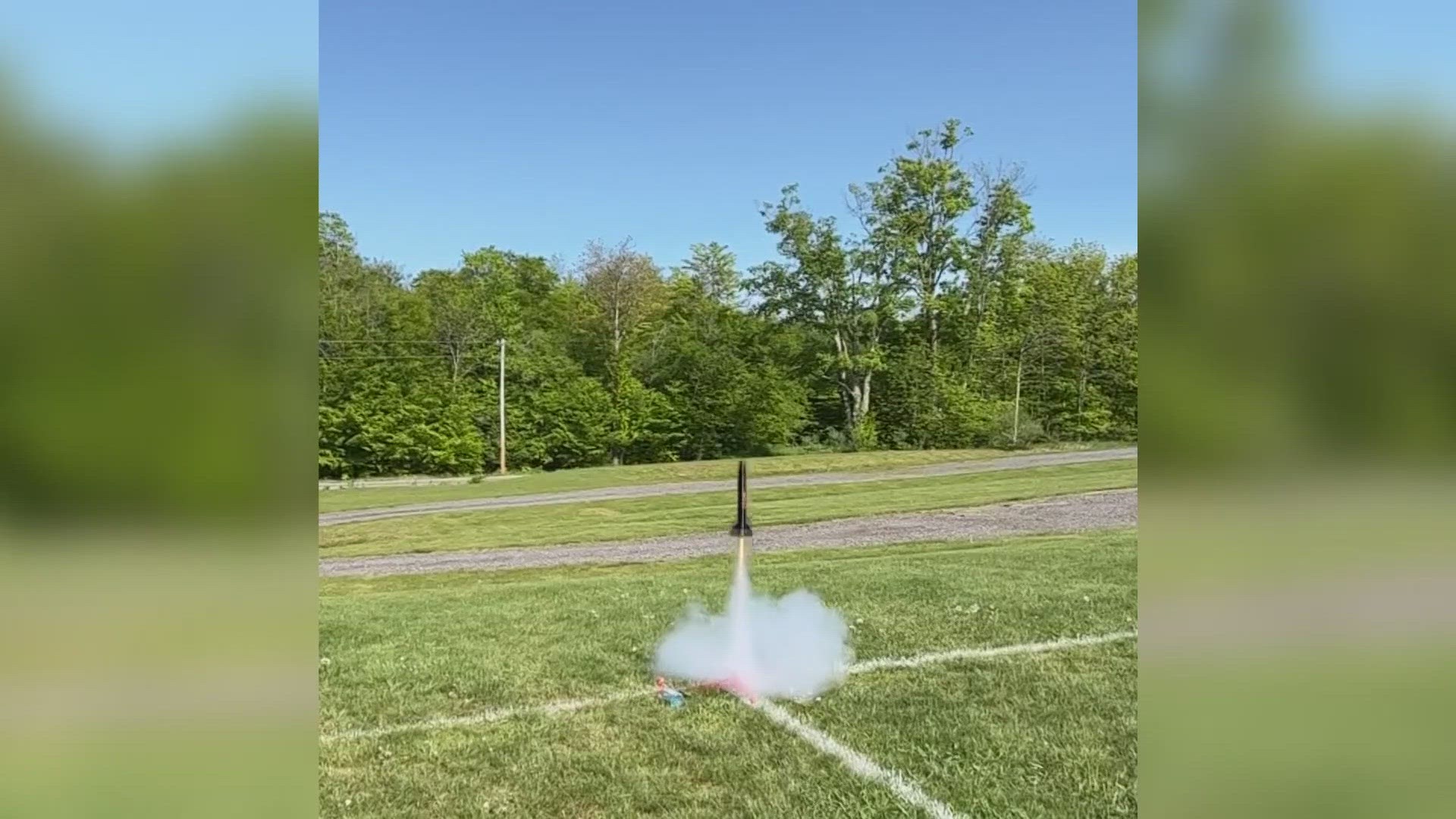BANGOR, Maine — High school students across Maine got their chance to launch some science projects into space.
It's part of a program funded by the state to try to get students interested in the space industry after high school.
Collaborators of the 3D Smart Rocket Program: Educate Maine, the Maine Space Grant Consortium, and MaxIQ Space, hope the program will inspire "a new generation of aerospace pioneers."
Emily Dwinnells, project coordinator with the Maine Space Complex, says the program is designed to showcase the technology of space exploration.
"[It's] supposed to give them a kind of broad view of space—not just what it means to be an astronaut, that's one thing. Obviously, everyone knows Jessica Meir the local hero. But this program was really looking at: What is space all about?" Dwinnell said.
The 3D Smart Rocket Program allowed 34 students to send their science projects more than 90,000 feet into space in a high-altitude balloon to collect data.
It’s a way to emulate what happens to acceleration and velocity in space.
From there, the data is used to try and prove their theories.
Dwinnells gave insight into how students were using the technology to conduct their data collection.
"It's about focusing on developing payloads that go into space. So they are programming chip sets, that would fly in a satellite, into space, and they're running experiments from it," Dwinnells explained.
Trenton Beaudoin is in the Foster Career and Technical Program at Mt. Blue High School in Farmington. He's setting his sights on using space science to solve the world's climate crisis.
"I think it's cool, just space in general, like reaching heights you can never be at unless you are an astronaut. Like, 90,000 feet is very insane" Beaudoin said.
Last night, his class launched space balloons with projects inside. His goal is to learn more about the cause and effect of ozone layer depletion.
Beaudoin exclaimed, "It's really fascinating to see and learn about what's up there, and how it could affect us in the future."
Collaborators of the program say education is the foundation of what they are building on.
"Getting kids familiar with space, making them realize it's accessible to them, and if they have the skills and develop the skills to actually be a part of it is really our mission," Dwinnells said.
Even though people may not realize it, space has an enormous role in our day-to-day lives. Data collection using satellites is a big piece.
"It's responsible for GPS, Apple phones, [it] now includes space-related satellites to give you connectivity anywhere you are in the world," Dwinnells explained.
"It's not necessarily all about astronauts. That might be the thing that many aspire to be, but there are many different careers kids can pursue in space," Dwinnells added.
As for Beaudoin, he's leaving his space career trajectory wide open.
"Mechanical engineering is very fascinating to me. Something along [those] lines. Just aerospace engineering, anything like that," he said.
The futuristic outlook looks bright for Maine to further develop its space program. The state’s geography, location along the coast, a small but growing supply chain, and desire for more education programs like the 3D Smart Rocket Program could be the game-changer.
"It's amazing! Getting kids interested in space and excited about learning about science and math, something that's very important both in Maine, across the nation, and internationally," Dwinnells said.
The 3D Smart Rocket Program is the first of its kind funded by the state.

